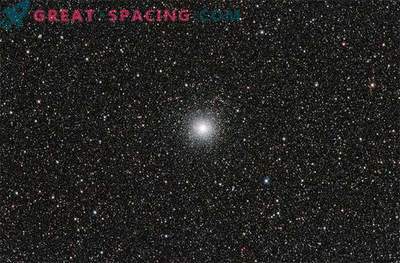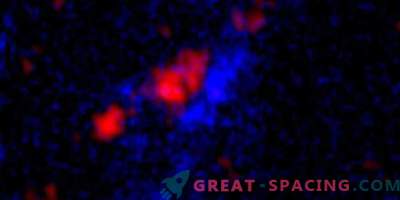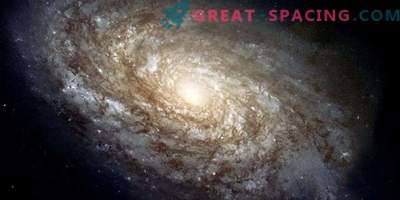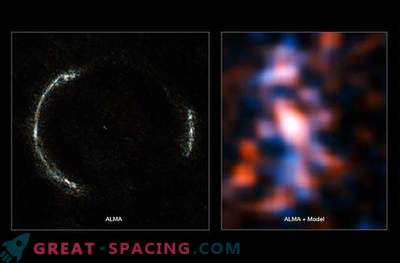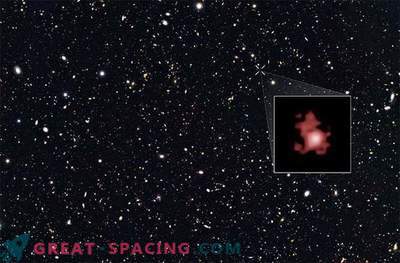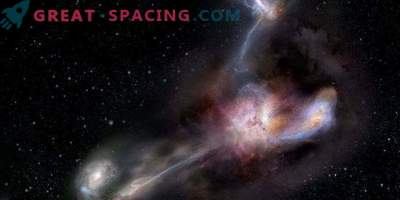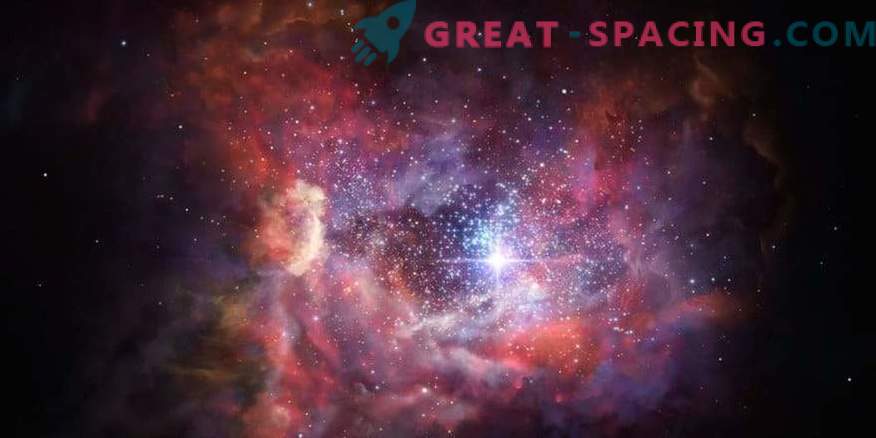
The found object is so remote that astronomers literally look at it when outer space was not more than 600 million years old.
Astronomers have spotted a distant young galaxy loaded with ancient cosmic dust from some of the youngest stars in the universe.
A2744_YD4 is the youngest and furthest galaxy ever observed in the Atakamsky large millimeter-range grid (ALMA) of the European Southern Observatory in Chile. You will see a video made by scientists of the EYU.
It is located in the Sculptor constellation approximately 13 billion light-years away, hiding behind the Pandora cluster. It was the gravity of the cluster that helped to see the galaxy, increasing the light. This method is called gravitational lensing.
Due to its remoteness, astronomers observe it at a universal age of 600 million years. Scientists estimate that it is now 13.8 billion, so the light from the galaxy has been spending ages to get to the telescope's lens.
To confirm this distance, a spectrometer (X-shooter) of the Very Large Telescope was used. This tool analyzes the light emanating from the stars to determine the size and composition. “This is not just the most distant galaxy. A huge amount hints that early supernovae have already polluted it, ”said lead researcher Nicholas Laporte from University College London.
When stars die (a supernova explosion), they leave behind themselves dusty and gas clouds, which can then form new stars, planets and other celestial bodies. Therefore, when astronomers found the remains of an old star inside one of the youngest galaxies, it came as a big surprise. In the earliest days of the Universe, when the first star clusters had not yet exploded, there was no star dust.
“We got a new idea of when the first supernovae exploded, and hence the time when the first hot stars settled in the Universe,” - written in a statement by representatives of the EYU. - “The calculation of the exact time of the appearance of this“ cosmic boom ”is one of the sacred Grails of modern astronomy. And it can be indirectly studied by examining the first interstellar dust. ”
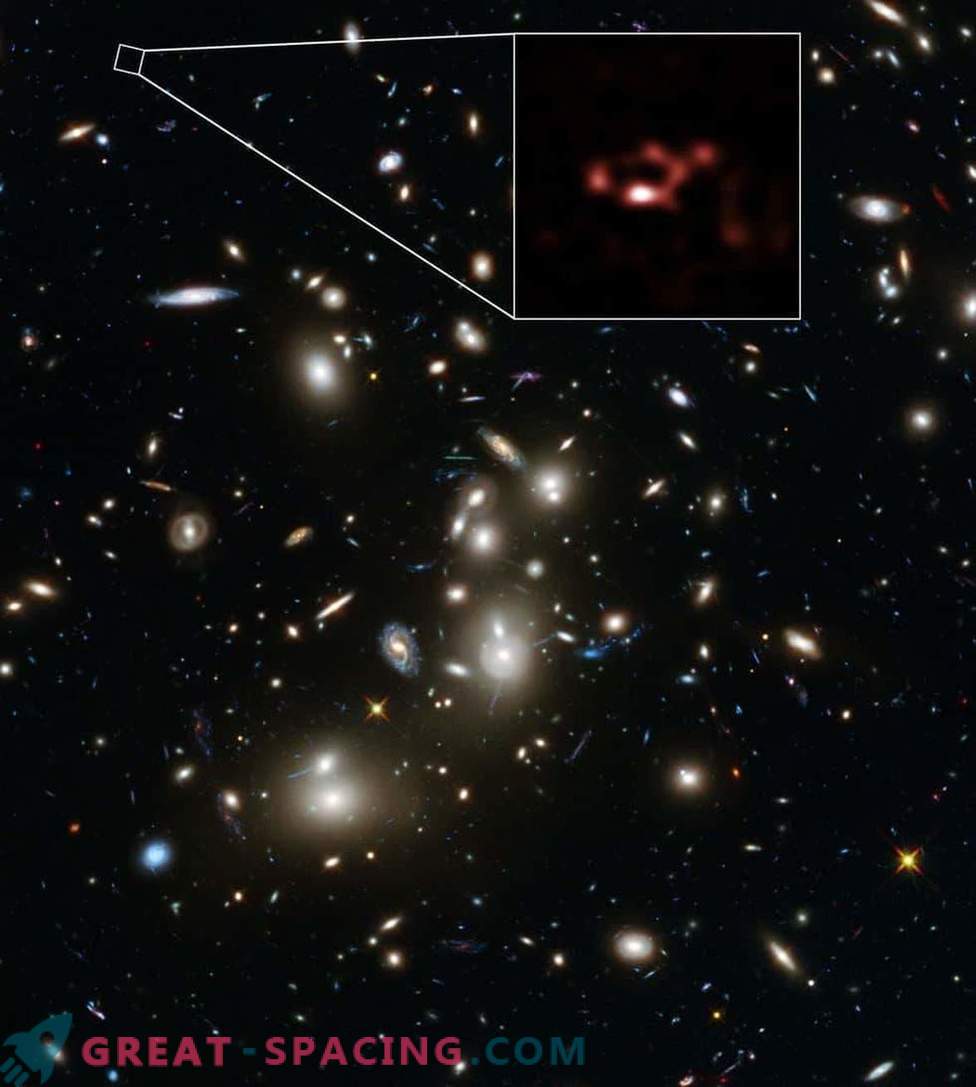
The Abell 2744 Galactic Cluster (Pandora Cluster), observed with the Hubble Space Telescope. Far behind him is a weak young galaxy A2744_YD4. New observations through ALMA (displayed in red) show that it is rich in ancient cosmic dust. Galaxy A2744_YD4, obviously, contains so much cosmic dust that it is enough to create 6 million suns, and the mass of stars is 2 billion times more than solar. Child stars appear at intervals of up to 20 solar masses per year, which is 20 times faster than the Milky Way gives.
“There is nothing unusual here, but it opens the curtain on how quickly the dust has formed in A2744_YD4,” said study co-author Richard Ellis. “It is noteworthy that the required time takes only about 200 million years, so we observe the galaxy almost immediately after its birth.”
This means that stars began to form even 200 million years before the light of the galaxy reached the ALMA telescope, allowing astronomers to admire the remains of some of the earliest stars in the universe.
“With the ability of ALMA to peer more deeply and look for such galaxies, we get a tremendous perspective,” said Ellis.

